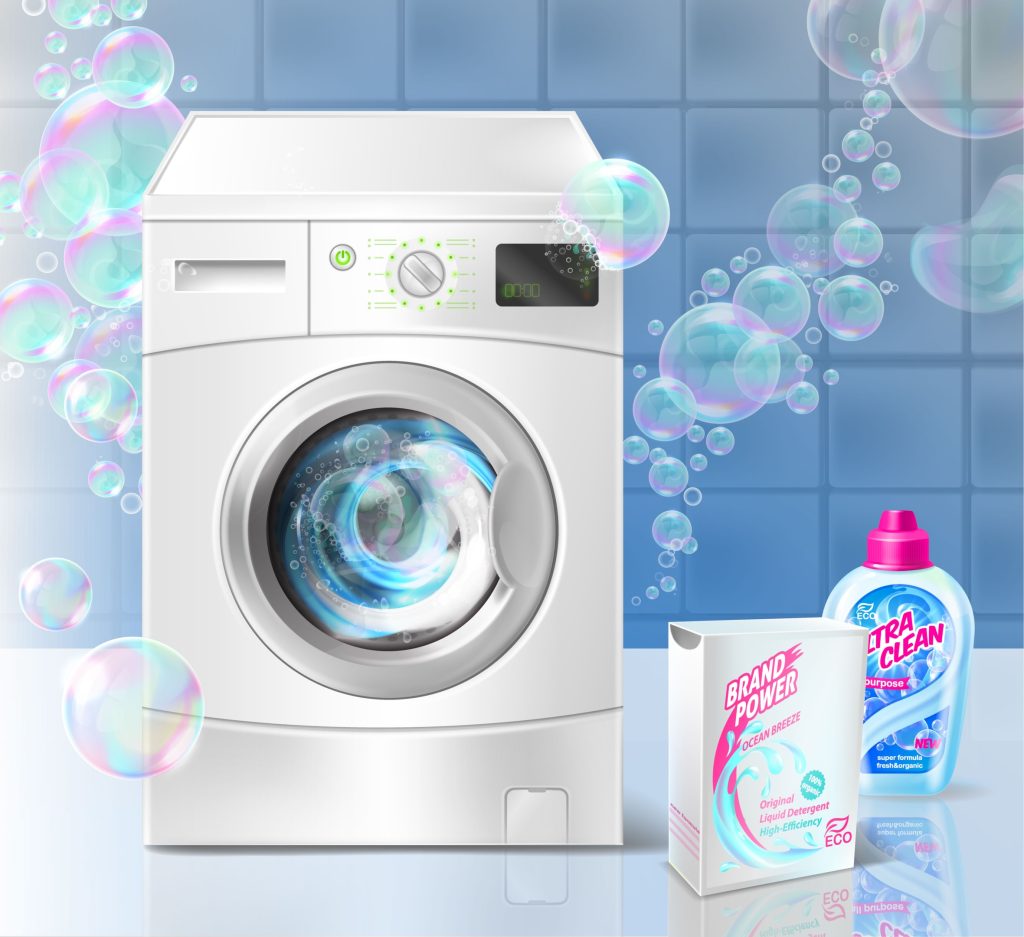How to Make Your Washing Machine More Energy-Efficient?

Making your washing machine more energy efficient involves more than just using cold water. By combining the right model, smart features, and strategic habits, you can reduce energy consumption, lower utility bills, and still achieve excellent stain removal. From choosing a front-loader or top-loading machine to configuring the drum capacities for loads of laundry, this guide will help you unlock your washer’s full energy efficiency potential. We’ll discuss crucial aspects like spin speeds, heat pump dryers, fabric softener usage, and eco-friendly cycles to ensure you maximize performance without inflating costs.

Choose the Right Washing Machine Model
Selecting the perfect type of washing machine is your first step toward an energy-efficient lifestyle. Focus on load washers that balance a larger capacity with manageable price. For instance, some modern washers handle 8-pound load or even 12-pound loads effortlessly. Before finalizing a model, check factors like Motor Warranty, one-year parts-and-labor warranty, and any special features (like steam or auto dispense) that enhance cleaning. Also, read online reviews or customer reviews—these insights highlight real-life performance, from dealing with tough stains to actual cycle times.
Understand the Significance of ENERGY STAR Ratings
ENERGY STAR-certified washers typically use less water and rely on advanced washing mechanism designs to minimize energy usage. This label indicates that the machine meets or surpasses federal energy consumption standards, helping you save on heating water and overall operational costs. Over time, a high Energy Star rating can significantly cut your kWh of energy used per load of laundry, resulting in noticeable utility bill reductions. Look for updated Integrated Water Factor (IWF) details that reflect a model’s water efficiency.
Compare Front-Loading vs. Top-Loading Machines
Front-load washers are often more energy efficient thanks to a horizontal drum design that uses less water while preserving fabric quality. On the other hand, Top-load washers sometimes feature an agitator, potentially offering shorter normal cycle times but often using more hot water. Evaluate your laundry space— do you have enough floor space for a bigger front-loading washing machine or do you need a more compact washers design? Stackable washers can free up spaces in tight rooms, while Portable washing machines might suit smaller apartments with limited floor space.
Opt for the Appropriate Wash Cycle Based on Load Size
Many washers include a variety of cycles—from heavy cycle to quick washes—for different fabric types and stains. Selecting an effective wash cycle that matches your load size prevents over-washing, preserving both energy and water. For instance, a normal cycle might suffice for daily loads of laundry, while a heavier load with prestained fabrics benefits from a specialized steam or deep-clean setting. Optimizing cycle time for each load of laundry ensures you’re neither under-cleaning nor wasting resources.
Utilize Cold Water Washes to Save Energy
Heating water is a big driver of energy consumption. Switching to cold water for most cycles significantly cuts overhead, as it demands no internal heaters or minimal auto temperature adjustment. Pairing cold water with the right detergents (especially those formulated for cold-water cleaning) still achieves strong Stain removal on many fabrics. For truly tough stains, occasional hot water or steam washes might be essential, but limiting them to a few cycles drastically lowers monthly energy usage.
Regularly Clean the Detergent Dispenser
A neglected detergent tray or liquid detergent dispenser can develop detergent residue, blocking water flow and undermining cleaning power. Over time, leftover fabric softener and dried-up detergents can become a breeding ground for mold. Every few cycles, rinse and wipe the dispenser area to keep your washing machine free from gunk and foam buildup. This maintenance step not only helps with stains but also fosters smoother water usage, ensuring consistent performance.
Maintain the Washing Machine for Optimal Performance
Simple tasks—like checking pumps, unclogging filters, and inspecting hoses for leaks—can extend your washer’s lifespan. A one-year limited warranty or limited one-year warranty often requires owners to follow basic maintenance guidelines. Open the washer door after each cycle to allow the drum to dry, preventing musty odors. Lint filter or foam filter (cleaning appliances) might also be necessary in specific combo or portable washing machines, so consult the user manual for recommended steps.
Load Your Washer Efficiently
Cramming in 12-pound loads when your machine’s recommended load capacity is only 8 or 9 pounds can hamper stain removal and drum rotation. On the flip side, underfilling the tub with a mere handful of fabrics wastes energy. Balance is key: fill to roughly 75-80% capacity to let detergent circulate properly. This approach prevents wear on mechanical parts and ensures every load of laundry gets thoroughly cleaned.
Consider the Benefits of High-Efficiency Detergent
Many modern washers, particularly front-load washers, require High-Efficiency (HE) detergents to minimize excess foam. These specialized formulas reduce detergent residue buildup and optimize water usage. HE detergents also help shorten cycle time, since the washer can rinse more effectively. With fewer repeated washes or rinses needed, you preserve energy and avoid fabric wear over price inefficiency.

Maximize Spin Cycle Settings to Reduce Drying Time
Increasing spin speeds extracts additional water from fabrics prior to the dry cycle in your electric dryer. Faster spinning reduces drying times, lowering energy usage and utility costs. Many front-loading washers or top-load washers let you pick “Max Spin” or “Super Speed” to expedite moisture removal—just be mindful of delicate fabrics that might not handle intense swirling well.
Use Energy-Efficient Dryers to Complement Your Washing Machine
Partnering your energy efficient washer with an energy-efficient dryer creates a synergy that drastically cuts energy consumption. Heat pump dryers or gas versions typically have lower operational costs, while some advanced models even feature “Ventless Heat Pump” technology. Look for a matching dryer designed for the same drum capacity or load size, ensuring minimal dry time and consistent results across multiple loads of laundry.
Explore Combo Units for Space and Energy Savings
Washer-dryer combos, like a 2-in-1 Washer or compact washers with a built-in dry cycle, can be ideal if you’re short on laundry space or want a single unit for both washing and drying. Some appliance brands offer stackable washers with a dryer combo to conserve floor space. Ensure the model with access to each cycle’s control remains convenient for your household’s daily routine.
Implement Smart Technology Features for Energy Monitoring
Smart features let you track your washing patterns and highlight excessive energy usage. Certain washers include advanced features like an integrated app or Wi-Fi connectivity to provide cycle updates, fault alerts, and Auto Condenser Cleaning reminders (for ventless heat pump dryers). By analyzing reviews from owners who tested these controls, you’ll see how smart features can drive day-to-day energy savings.
Take Advantage of Eco-Friendly Settings
Eco or “Green Choice” cycle options often use cooler water temperatures and tailored rinse phases to keep energy consumption low. Some washers automatically adjust water volume based on load capacity, plus tweak spin speeds to reduce overall cycle length. Use these advanced features for everyday laundry to mitigate environmental impact while delivering effective wash cycles.
Schedule Laundry During Off-Peak Hours
Many utility companies offer time-of-use pricing, lowering price rates at night or on weekends. Doing loads of laundry during these off-peak windows not only saves money, but also helps balance electrical loads on the grid. This can be especially effective if your washing machine or electric dryers are set for a “delay start” feature, letting you match laundry tasks to cheaper hours automatically.
Use a Drying Rack for Air-Drying Clothes
Shortening each dry cycle by partially or fully air-drying your fabrics lowers energy usage further. Once your washer has spun at high speed, hang stains-prone or thick garments on a rack, preserving fabric softener scents and saving on time. This also helps avoid dryer’s heat for tough stains that might set if exposed to high temperature.
Educate Your Household on Energy-Saving Practices
No matter how energy efficient or advanced your washing machine is, you’ll need your household on board for consistent environmental impact reductions. Teach them about cold water cycles, the best detergents for normal vs. heavy cycle, and the advantages of spin speeds. Encourage them to check detergent trays, keep an eye on the drum, and avoid overfilling load washers with more clothes than recommended.
Personalize Your Laundry Routine for Efficiency
Not all fabrics or stains demand the same solution. If you frequently handle sports fabrics with sweat or tough stains, try a steam feature or Super Speed cycles. For smaller households, compact washers or portable washing machines might suffice at an affordable price. Online reviews and customer reviews of different appliance brands can guide you to the best model for your laundry space and demands.
Why Choose Toronto Refrigeration for Washing Machine Repair and Maintenance?
Toronto Refrigeration is renowned for providing reliable repair services across a wide range of appliance brands. Our experienced associates offer comprehensive solutions—from diagnosing mechanical issues in your front-load washers to tuning up top-loading machines for better spin speeds and energy usage. Whether you have an 8-pound load or a bigger 12-pound loads cycle, we customize our approach to handle fabric softener residue, pump blockages, or general drum cleaning. Beyond repair, we advise on the best time without notice or special offers to upgrade to more energy-efficient washers or electric dryers. Trust our solid reputation and one-year limited warranty on key repairs to keep your laundry space functioning at peak efficiency year-round.
Conclusion
Making your washing machine more energy efficient involves selecting the right type of washing machine, utilizing eco-friendly features, and refining your laundry routine—from cold water cycles to fast spin speeds. Simple changes, like cleaning the detergent tray or scheduling loads of laundry off-peak, can cut energy consumption and costs. Brands offering ENERGY STAR ratings and advanced steam or auto functions also elevate performance. By taking advantage of stackable washers or washer-dryer combos for limited spaces, you’ll find an optimal balance between cost, sustainability, and cleaning power. Start implementing these tips today to benefit your home—and the planet.